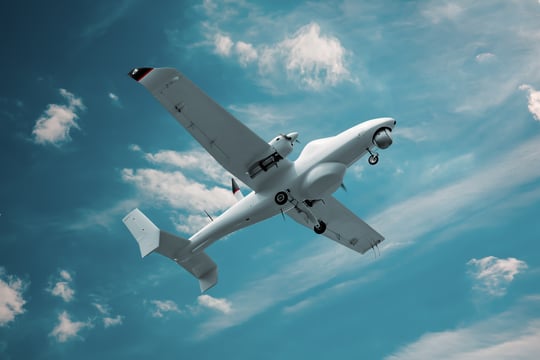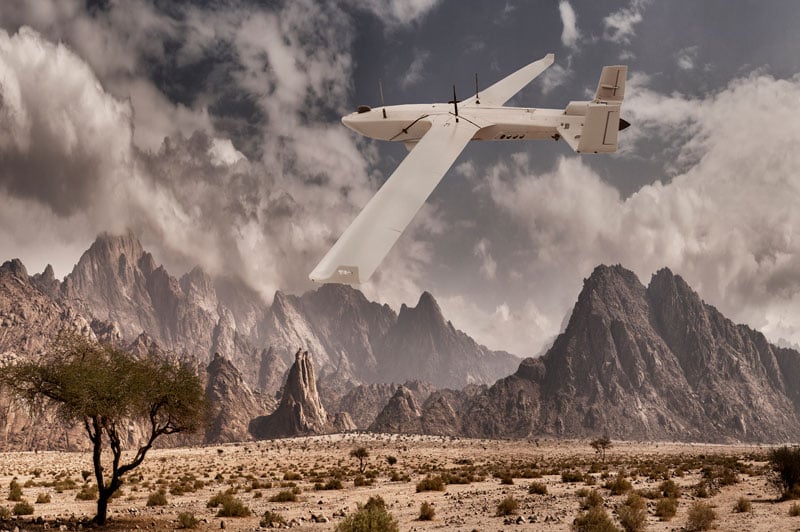AOC 2023: tactical in-field deployments of RF systems for spectrum dominance

What can you do in eight minutes? Run a mile. Keep a wounded soldier alive. Or, as Brig. Gen. Brian Vile said (reported in Military Times) at the recent Maneuver Warfighter Conference at Fort Moore, Georgia, “After you break squelch on your radio, you’re going to learn two things in 8 minutes — how good was your [emission control] and how good are your adversary’s [electromagnetic warfare] soldiers.”
Mastering the electromagnetic spectrum with advanced RF technology undoubtedly saves lives. CRFS helps militaries worldwide achieve spectrum dominance through our strategic partnerships and, most importantly, by listening to customers to develop the RF systems frontline warfighters need.
Jump to menu
2023: a year of partnerships and delivering novel solutions
CRFS designs systems that meet customer needs
CRFS technology enables strategic partnerships
Multi-domain integration options at AOC 2023
New tactical direction-finding head system to be unveiled at AOC
Come and visit us at AOC 2023
2023: a year of partnerships and delivering novel solutions
For CRFS, 2023 has been a year of partnerships—partnerships that have answered our customers’ tactical requirements and calls for multi-domain superiority.
C-UAS: RAFAEL and CRFS collaborated on behalf of a European NATO member who wanted to add advanced RF capabilities to its Drone Dome™. CRFS enhanced RAFAEL’s RF detection and geolocation capability by integrating RFeye technology, which performs highly accurate RF-based drone detection across a wide range of threat vectors and over an extensive operational range.
ISR: Aeronautics and CRFS worked together on a project for a European military customer looking to enhance their SIGINT / ELINT capability. CRFS integrated RF sensor technology within the Aeronautics Aerostar UAV range to enhance RF signal detection, capture, and geolocation missions across a wideband spectrum range (10MHz–18GHz).
Tethered drone: Equinox Innovative Systems and CRFS worked together to mount an RF receiver and antenna onto a rapidly deployable tethered drone. The drone can elevate to 400 feet (121 meters) and functions as an eye in the sky for military ISR, spectrum analysis, geolocation, communications, and SIGINT.
ISR: TEKEVER and CRFS successfully integrated sub-tactical unmanned aerial systems (UAS) with highly sensitive RF sensors as a payload. The wide-area surveillance UAS housing ruggedized RF sensors offers unparalleled spectrum monitoring, detection, signal capture, and geolocation (TDoA) capabilities for the military end user.
|
The groundbreaking partnership between TEKEVER and CRFS is a testament to the power of collaboration. It's a game-changer, offering end-users an incredibly versatile asset that can cover vast land and sea areas. Tiago Nunes, Product Director at TEKEVER |

CRFS designs systems that meet customer needs
CRFS projects are driven directly by our customers’ needs. The ideas behind systems meant to be deployed in the field should come from the field—and we quickly build these systems to be rapidly deployed.
Our COTS sensors are powerful, ruggedized, and optimized for SWaP. CRFS sensors are multifunctional, allowing them to be repurposed or interchanged across missions and applications. Moreover, they form part of systems developed to advance EMS superiority through partnerships—rather than being part of programs of record (PoR).
CRFS technology enables strategic partnerships
Strategic military partnerships amplify the capabilities of each participating nation, advancing a combined strength that is far more formidable than what any single country could achieve on its own.
As mentioned by Rick Larson in an AOC panel discussion at the Hudson Institute, US-UK cooperation on EW has been hugely beneficial for both countries. Leveraging the expertise and experience of multiple nations can help refine tactics, techniques, and procedures. And joint exercises allow forces to test and hone their capabilities in realistic scenarios alongside their partners.
Militaries from the NATO alliance and allied countries across the globe deploy CRFS’ tactical military RF systems to achieve spectrum dominance. The feedback our customers provide benefits peers as each military uses CRFS systems for various applications in diverse geographies. This dialogue helps improve our systems by providing us with an understanding of how you are using them.
Multi-domain integration options at AOC 2023
CRFS will showcase our latest tactical military RF systems already deployed in the in-field. These systems allow users to passively monitor the RF spectrum in real-time and carry out geolocations for ISR and EMSO applications.
In hostile conditions, these capabilities give military forces a tactical advantage by allowing them to quickly detect, measure, and monitor RF signals. This provides real-time battlefield awareness and the ability to respond rapidly in dynamic situations.
Fixed-wing drone integration
Integrating tactical fixed-wing medium-altitude drones with RF sensors yields an advanced ISR solution through 360° situational awareness and increased line-of-sight. Also, as increasing altitude allows signals to be detected at greater distances, spectrum monitoring receivers can be operated at greater distances from active combat zones.
Tethered drone integration
Integrating a tethered drone with an RF sensor as a payload enhances line-of-sight and operational range. The tether provides continuous power for extended operations and a reliable data link for real-time transfer. These drones can be deployed rapidly from the back of a truck to create an instant aerial tower without fixed infrastructure. They can be repositioned quickly to adapt to changing operational scenarios.
Tactical vehicle integration
V-Track is a TRL-9 mobile spectrum monitoring system and tactical EW vehicle. Currently deployed at the operational edge, V-Track comes in two models: one with a 20-meter mast and another with an Array 150 direction-finding system. Operators can deploy quick dismounted systems and integrate with ISR drones for joint land and air missions.
Unmanned surface vessels
As unmanned surface vessel operations expand, it is essential to safeguard their PACE plans from jamming and unintended civilian disruptions in coastal areas. CRFS provides spectrum monitoring solutions for USV MIMO MESH networks in bays, lagoons, and archipelagos. This system can automatically detect and locate sources of jamming, ensuring consistent USV communication.
New tactical direction-finding head system to be unveiled at AOC
We will be exhibiting our new 30–300 MHz direction-finding system for tactical and mobile deployments. The LFDF antenna only takes up one antenna port, meaning omnidirectional monitoring continues. Add multiple LFDF antennas to create an Angle of Arrival (AOA) geolocation system from existing or new RFeye Nodes.
- Small form-factor
- Low-band DF compact head
- Rapid deployment
- Highly configurable
- Expandable performance
- GUI operation with a rugged laptop or tablet
Come and visit us at AOC 2023
AOC 2023 is all about strategic alliances and partnerships, and we relish the opportunity to meet old friends and make new ones at the event. Our team will be at stand 1315, ready to answer your questions, give demos, and showcase our technology.
- Strategic Partnerships and DOD Programs, Scott Zederbaum
- EW Payload and Drone Detect Solutions, Jade Long
- NATO, Middle East, Asia EW/Spectrum Solutions, Darren Nicholls
- US DOD Tactical EW and Spectrum Solutions, Aaron Ahloe
- US Test Ranges and Bases Solutions, Keith Higgins
- JEMSO and EMCON Solutions, Zac George
Jaimie Brzezinski
Jaimie Brzezinski is Head of Content for CRFS. His specialty is turning highly technical ideas into engaging narratives. He has 15+ years of experience in writing technical content and building global teams of subject matter experts.
